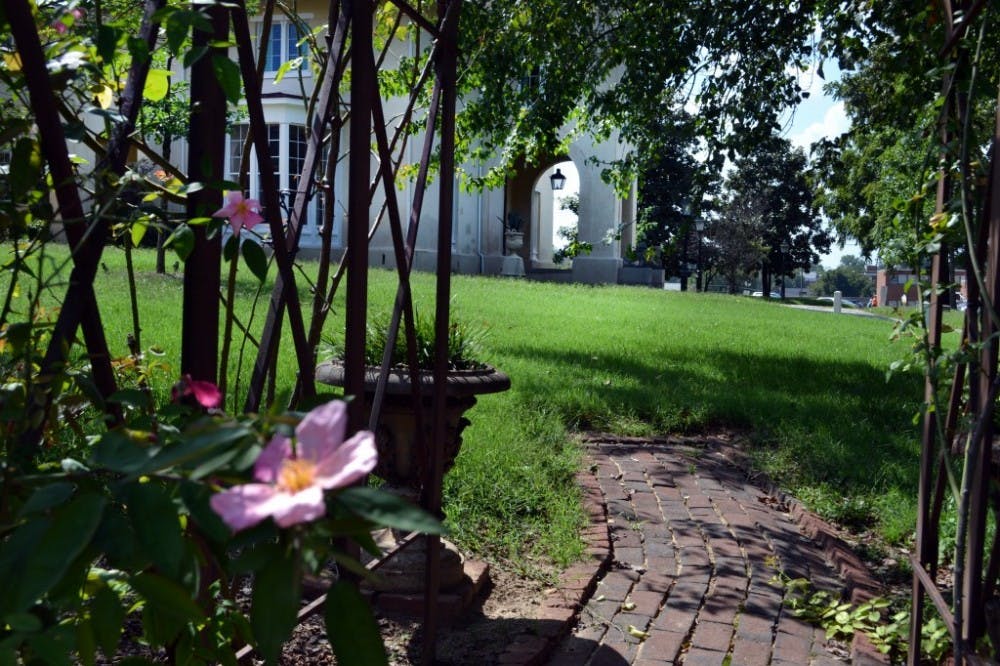Progressive and modern might not be how you would describe a site rich in history, but that’s exactly how Blandwood Mansion’s Executive Director Benjamin Briggs said the landmark home was designed.
Former North Carolina Governor John Morehead was the most notable owner of the home, who completed the mansion in 1846. According to Briggs, Morehead chose the unique Italianate style for the villa to make a statement.
“At this point in history, other states had flourishing port cities,” Briggs said. “Governor Morehead wanted to make a point that North Carolina was as modern and progressive as any other state on the eastern seaboard.”
At the time, there was only one other Italianate style home in America. Blandwood Mansion is now the oldest standing example of Italianate style architecture in the United States.
The home maintains the majority of its original furnishings, which were considered fashionable for their time. They were hand selected by the home’s architect, A.J. Davis, and transported all the way from New York City by horse and cart to Greensboro. Morehead’s law library, office and even a handmade paperweight that was a gift from his daughter remain in prime condition on display.
The walls of Blandwood Mansion have seen pivotal moments of North Carolina history. Predating the city of Greensboro, during Morehead’s residency, one could look out the windows of the mansion and see the city coming to life. According to Briggs, Morehead designated that the railroad be built to travel through Greensboro, which is why one can note a curve in the map of the railroad tracks through North Carolina, and why Elon students hear the rhythmic song of the train as it passes through campus like clockwork.
The house survived the Civil War, thanks to Jefferson Davis’s respectful decline of Morehead’s invitation to visit the home. Rather than accepting his hospitality, Briggs said the Confederate leader slept in a boxcar nearby, so the home was not at risk of being burned by Union soldiers. The parlor walls witnessed Morehead surrender to the Union, whose soldiers received the telegram that they were directed to arrest Morehead shortly after, barely missing their opportunity.
Briggs said the home was the first project restored by Preservation Greensboro, an organization that restores historic homes, churches, parks and cemeteries. The program also promotes Architectural Salvage Greensboro, which repurposes relics from historic homes that are being torn down. Preservation Greensboro encouraged the restoration of what is now the campus of Elon University School of Law. Briggs said the building reflects the school’s perspective since it is progressive and modern while still respecting tradition and history. In the 1960s, notable architect Edward Loewenstein designed the building, which includes relief panels by Greensboro artist Gregory Ivy. The building received the Preservation Award in 2006.
Briggs encouraged participation in Preservation Greensboro and visiting Blandwood Mansion to learn about history, architecture and interior design. The organization provides ways to repurpose sites of the past,
The organization has “parties in really cool places. We have fun with these old buildings,” Briggs said.
Along with events, many historic homes in the Greensboro area are salvaged and made available for sale.
“What a cool place to live,” Briggs said.
For history buffs, interior designers and anyone just looking for a quick escape, Blandwood is a must-see.
Tour hours are Tuesday – Saturday 11 a.m. to 4 p.m. and Sunday from 2 p.m to 5 p.m. For more information visit the Preservation Greensboro Facebook page or http://www.blandwood.org


